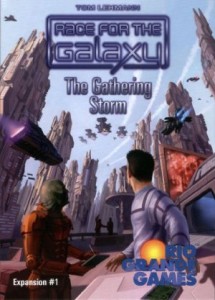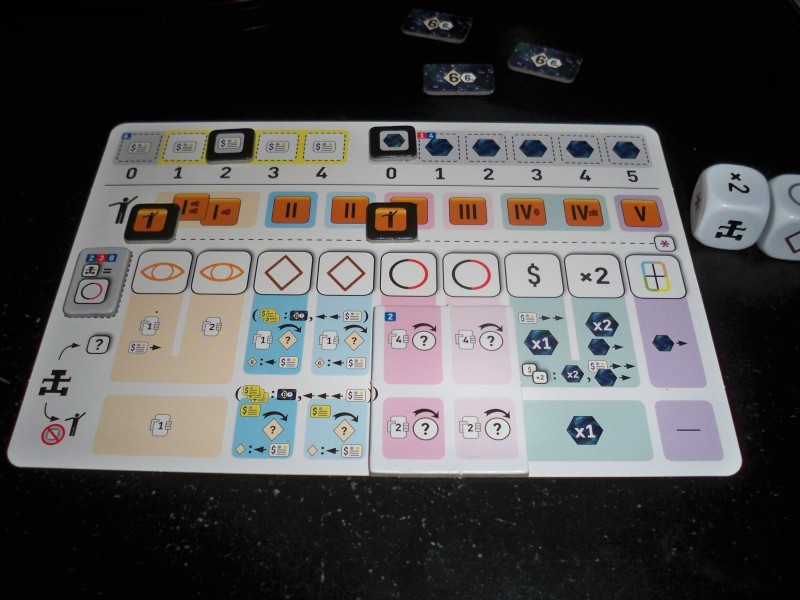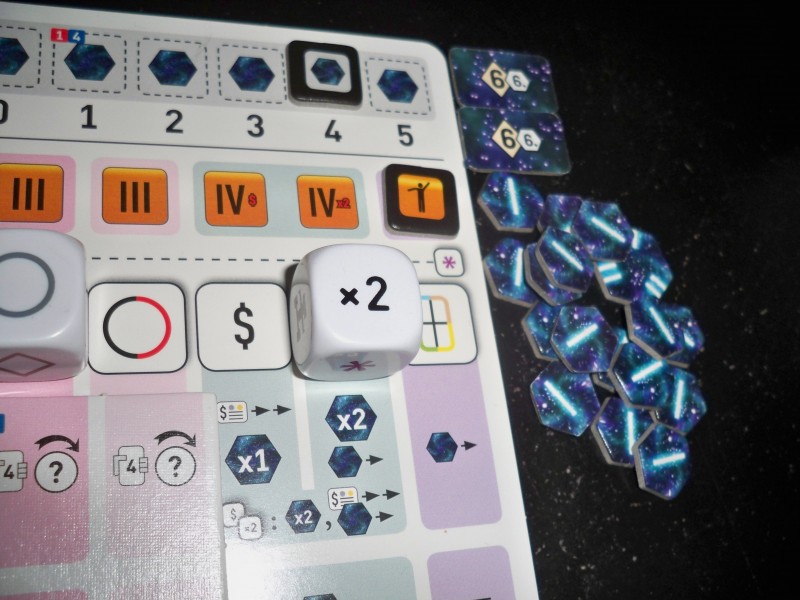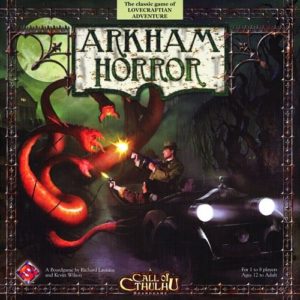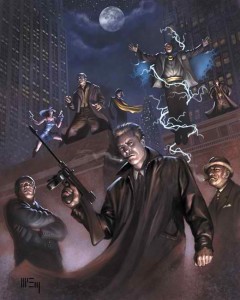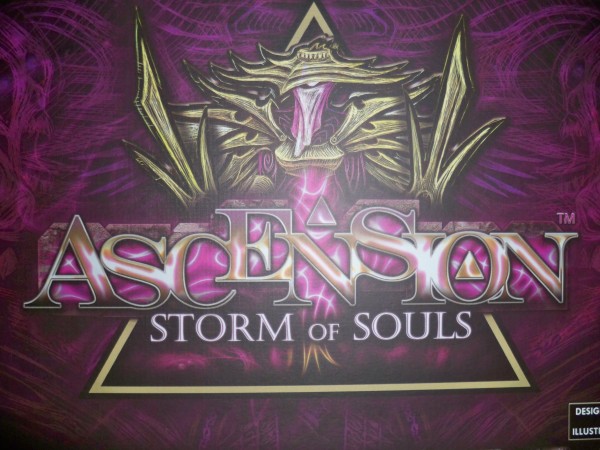The sound of distant cars echo off the surrounding buildings as you edge down the alleyway. The old man at the diner had seemed to know what he was talking about, but now, with the darkness closing in, you feel a chill creeping down your spine. An ominous scraping sound alerts you to the fact that you are no longer alone. You can’t help but ask yourself, “Why did I come down here by myself? Rule Number One: Never go alone…”
Today on Variant Play we have our first installation of “Going Solo”, where we look at single-player options for board games. Did you hear that, boys and girls? Who needs friends? Yes, you can play board games all by yourself!
Wait, where is everyone going?
Let me explain first before you go wandering off. See, while we all enjoy playing games, not many of us seriously consider playing them alone, even when we see that many games already come with the rules for it. Aside from that there often isn’t the need for most people to go it alone, the idea of someone at home playing board games solo may seem odd. Strange even. After all, why not just go on your computer, the (ironically) culturally more accepted alternative?
Let that sink in a moment. It is considered normal to play video games for hours by yourself, but board games? That’s just weird.
And yet, we’ve all had times when we just couldn’t get people together to crack open some games. Plans change, last minute cancellations, life gets hectic, dingo ate the baby, what have you. You could abandon your geeky plans. Or, you can give single-player mode a try. Consider three examples on when you should consider going solo:
- It’s a new game, and you plan to break it out with friends soon. Rather than open everything for the first time when everyone is sitting at the table, and spending your first 30 minutes reading and rereading the rules out loud to figure them out, have a dry run first. You’ll be in a much better place to explain how to play when you worked out the details beforehand. It gets everyone in the game sooner, making it that much more enjoyable of an experience.
- To get a leg up on strategy. Practice makes perfect!
- You already have the game, why let someone else’s absence take away the fun?
Here are a few gaming possibilities you can consider if you’re looking for the 1-player option:
Race for the Galaxy: The Gathering Storm
Official Solitaire Variant
Race for the Galaxy’s first expansion, The Gathering Storm, introduced a “separate” Solitaire game for players using the Advanced Two Player Rules. Using the same cards, they actually provide a small game board, some dice, and counters that represent the actions of an automated robot opponent. The robot’s default actions are determined by its starting world. You place any counters with that world’s number on the board as your reference.
Each turn, you select which two actions you choose as if you would in a two player game, then roll the two dice to determine the robot’s actions. These dice have diagrams of each action phase on them, along with an asterisk indicating that it is matching your right-most action. As the robot cannot see his hand or formulate decisions on his own, his actions are automated; whatever Worlds or Developments he plays are completely random. The board keeps track of the “Credit Line” the robot uses to buy Developments, preventing it from buying every six-cost Development it finds. The game ends as in a normal game, when either player has twelve cards in their tableau or all the VP chips are taken. Seems simple enough, right?
That said, determining the Robot’s actions requires referencing the rule book pretty frequently until you get the hang of the icons. As you can see, the Solitaire Board has no reminder text, or words of any kind for that matter. Fortunately, most of the diagrams are self explanatory to anyone familiar with the game, and I’ve found that players get the hang of these new ones around their second game.
It is worth noting that playing this solo version is a very different game compared with other players. You cannot work around lulls in your opponent’s tempo (such as Consuming before he has a chance to Produce), and the game can very quickly slide in Mr. Roboto’s favor. Will the random Development he flips and plays be humble Investment Credits or the powerful Galactic Federation? Of particular note, is that the robot’s Consume action allows him to acquire VP chips every time it’s selected, while you have to Produce before gaining any benefits per usual. This can quickly lead to the Robot acquiring all of the VPs while you’re still getting your Consume Engine running.
Overall though, Race Solitaire makes for some fun, challenging gameplay. With three difficulty modes, the challenge level can be adjusted to compete against any player’s skill level. That being said, players will have to adjust their play style to the game changing mechanics of the Robot. Solitaire really does make Race for the Galaxy live up to it’s name. If you’re not on top of your game, it will leave you behind.
Arkham Horror
Official Solo “Variant”
Anyone who has ever gamed with me learns quickly that I love Arkham Horror. As a fan of the Mythos I appreciate all the flavor in every encounter, and I chuckle every time my investigator stumbles across a character I recognize from one of Lovecraft’s works. While I enjoy the thematic interactions I have with others while I play, I find that I’m unable to get in a game of this as often as I’d like.
Fortunately, the challenge and story can be enjoyed by even the small group of one. Unlike other games on this list, playing Arkham Horror alone requires no special rules. Technically, the only reason I’d even classify this one as a variant is how seldom it’s actually used. While it says right on the box that the game is for 1 to 8 players, very few people ever think of tackling the Great Old Ones alone.
And in some ways, they’re right: exploring Arkham with a single investigator is… difficult. Not impossible, but definitely a challenge. Indiana Jo – I mean “Monterey Jack” – is the man, but even he needs backup from time to time…
The game is naturally dynamic, and it changes in difficulty with the number of players. The more investigators there are, the more monsters stalk the streets and skies of Arkham, and the Terror level of the city rises faster. The reverse is also true. However, Gates continue to open at the same rate regardless. While a single investigator should have no problems keeping the monsters in check, the necessity of Gate-jumping complicates matters. This is especially true when you consider that not all characters are the jack-of-all-trade types and may not have the fighting skills to cut it alone.
Instead, I’ve found it’s much better to run a few investigators yourself. It will allow you some additional strategy and shouldn’t overwhelm you. For most players, I would recommend keeping track of two characters if you’re looking for a short game, and three if you’d like something a little longer. Both allow you some freedom of strategy without requiring you to micromanage past your comfort zone. The truly ambitious or skilled can try running four, but keep in mind that you will have to keep track of everyone’s upkeep, and the constant juggling can start to wear after the first hour. This is a game after all; you will want to find the number of characters that works for you. And as always, the more investigators you have, the longer the game will run.
And of course, you still get to fully explore that classic Arkham cast: the Gangster, the Nun, the Politician, the Drifter…
Let’s be honest. One of the awesome elements of this game is running an ensemble cast of hardcore toughs from the 1920s.
One rules tweak I would suggest you throw in for solo players: Only draw Mythos cards every other turn. While Environments and Headlines won’t hurt you much, Rumors can be brutal on a single pair of investigators.
So why should you solo Arkham Horror? Because you can play with the same feel and flavor even if you’re playing alone! The storyline doesn’t change, the encounters remain the same, it is still in every way Arkham. As a bonus, putting you in the pilot’s seat can provide you with a much deeper understanding of the game, especially if you’re not used to being the “Rules Person” who usually runs it.
Of course, the main drawback of multiplayer Arkham remains in single-player: the setup. I know some people who balk at going through the logistics and time investment of setting up a solo mission, but hey, that’s Arkham Horror.
If you really do love a challenge, go ahead and run truly solo with the one character. Don’t say you weren’t warned though…
Ascension: Storm of Souls
Official Solo Variant
Ascension, for lack of a better term, is the fantasy combat version of Dominion. You build your deck and fight Monsters to gain Honor, occasionally finding ways to mess with your opponents. I enjoy how quickly games play out, the ease of setup, and the constantly changing interactions. It is a far simpler game, however, which means it does lose a little of the sheer volume of variety Dominion players enjoy. Luck is also much more of a factor, and while you can’t quite chain together the same level of combo-awesomeness, it still remains a fast, easy, and fun addition to a game night. Storm of Souls is an expansion which can be shuffled into the original version (Chronicles of the Godslayer) or played as its own standalone game, which is a great feature I enjoy in games and would love to see in other products.
The Solo variant provided keeps much of the game’s feel, but much like Race for the Galaxy’s Solitaire version, it puts you on a faster clock. This time, though you’re not fighting a silhouetted R.O.B. The Robot. Say hello instead to the Nemesis.
With Ascension’s solo play, you set up the game as usual, grab your starting ten-card deck, and lay out 50 Honor Tokens. Whenever you acquire or defeat one of the cards in the center row, instead of replacing it from the draw pile, move all the cards on it’s left over one space to the right, then draw to replace the now empty left-most spot.
Think of it as a giant conveyor belt.
After each turn, Nemesis devours the 2 right-most cards on the center row. It keeps any Hero or Construct cards it acquires off to the side for scoring at the end of the game. Any Monsters it devours go to the Void, and Nemesis gains whatever Honor they were worth. The conveyor belt moves the line to the right and refills on the left from the draw stack.
An important note: When Nemesis defeats a Monster, only pay attention to the Honor value. Ignore any other information printed on the card. Nemesis does not use abilities, and has no need for your pesky little “rewards”.
As soon as the last Honor token is claimed, the game is over and you see who gained the most Honor from tokens and cards.
Nemesis’ ability to automatically acquire cards gives it a tremendous advantage, especially in the opening turns of the game. It won’t always gain seven or eight-cost cards right off the bat, but you will definitely start the game at a disadvantage as Nemesis leaps ahead in Honor. The challenge lies in grabbing the right Heroes and Constructs to surge ahead in the late game to secure victory. And this is not easy. Expect most of your games to be very close.
Your best bet lies in finding any ability that lets you banish cards from the center row. Denying Nemesis the most valuable cards is a much safer strategy than hoping you can pool your resources in time. Also, as contrary as it may sound, try to avoid buying the cheap Heroes from the center row unless their ability seems vital. Let him munch on the small guys while you buy from the “Always Available” slots on the side. That small Hero you rescue might be replaced by a valuable Construct you would rather he not get!
As a solo game, Storm of Souls loses some of the depth of its multiplayer counterpart. The added rewards from defeating Monsters, in many cases, no longer apply. Nemesis has no hand, no Constructs, and thus can’t be hindered quite so easily. Instead of balancing strategies against your opponent, you have to find enough synergy to grab the juicier prizes before your opponent systematically acquires all the Honor tokens. Nemesis is a beast whose appetite is never satiated.
That doesn’t make it a bad game though! It’s still fun, it’s challenging, and if you don’t feel like getting too involved with strategy it might just be the quick solo game for you.
That’s it for this VariantPlay: Solo Edition, but don’t worry! There are many more games to come!
![]()
Nathan Crocco is a regular contributor to the site. If you have particular game variants you wish to request of him, he can be reached at nathan@cardboardrepublic.com.
You can discuss this article over on our forums!
Photo Credits: Monterey Jack by Board Game Test; “The Good Guys” by Patrick McEvoy; Call of Cthulhu by kibo9000.


